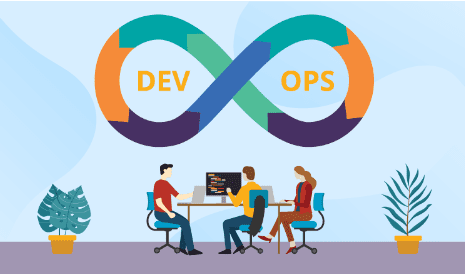The technology industry has experienced rapid growth over the past few years. The increasing demand for software solutions results in increased pressure on the industry to meet customer requirements and expectations. Most of these problems concern efficiency, increased and functionality. The increasing demand for software solutions results in increased pressure on the industry to meet customer requirements and expectations. Most of these problems concern efficiency, increased functionality, reliability, and accessibility.
Cloud-based software has changed the way software development is conducted and the way it was viewed prior to it. The latest approach is to view software as a continuous service rather than restricting it to a particular task that is required by the client.
Companies that develop software have moved from a monolithic approach to an agile method, where developers continually enhance the software by making modifications using feedback from customers. They also employ techniques for software development such as Agile, Scrum, and Rapid Application Development to ensure that changes are made quickly.
Combining DevOps with automation increases the efficiency of methods of software development.
The term “DevOps” was first introduced in 2009 and was coined by Patrick Debois. The approach to bridging the gap between IT and software development operations is known as “DevOps automation.”
Gartner defines DevOps as “focusing on speedy IT delivery through the use of lean, agile methods within systems-oriented approaches.” DevOps is a focus on people and culture and aims to enhance the collaboration between development and operations teams. “DevOps implements technology, particularly tools for automation that are able to leverage an ever-changing, programmable, and dynamic infrastructure from a life-cycle view.”
What are the reasons to take on DevOps automation? This is a crucial question to be asked. It is also important to identify the level of automation you’re looking for. In many cases, businesses adopt DevOps to an extreme that isn’t productive. The result is that they over-automate to try to automatize the development process through linking multiple tools. This obstructs the real goal of the process and can lead to negative results.
To achieve a balance between over- and under-automation, it is crucial to be aware of your needs regarding development, testing, and deployment. Once you have this information, only then can you choose the right tools. The education of developers and administrators about the tools is as important as the previous research.
Overdoing Agile and DevOps
Enterprises are able to overdo DevOps automation through Agile methods. The main cause of the problem is the confusion over the Agile method as opposed to the waterfall method. Agile is certainly the latest and most effective approach, but certain companies get caught up in it. They get carried away, which leads to overdoing the automated processes and automation in Agile as well as DevOps.
While certain people are excessively automating DevOps, others aren’t using it. How do you find the right balance?
Automation is the process of taking manual processes and using technology to make them reusable in some way. The quality of the process will not improve automatically. In the event that your procedures are not working or are poorly constructed, then they are simply inefficient processes with no automation.
The first step is to determine the processes that take place during the development process. Once you have identified the processes, you must implement the appropriate major DevOps tools for those processes. The key thing to remember in this regard is not to be too easily influenced by it. There are many processes that should not be automated.
The third step is to be aware that you’re a unique individual, and that’s why you have needs. Not every process requires automation in order to accomplish your goals.
Top Benefits of DevOps Automation
Standardization
Standardization refers to the standardization of the toolset that software developers use within large organizations. These software configuration management tools enable the creation of a work environment that includes the following:
Significantly reduces the possibility of duplication
Guidelines and procedures that are properly implemented
Reduces risk
Utilizing standard practices can increase the possibility of automating other manual procedures.
Consistency
Automation is an excellent tool for detecting and resolving issues with software behavior. The final result is consistent and predictable in an automated system. This is due to its static software configuration and the absence of human interaction. This means that the probability of making mistakes is significantly reduced.
Scalability
Manual processes aren’t able to offer the flexibility that automated processes can offer with regard to scalability. Automated processes can easily be increased in size by creating additional processes that can be adapted to the future demands.
Another thing to note is that scalability does not depend on the available capacity of human resources but rather the availability of hardware and software, which isn’t a problem in cloud-based software.
Speed
The most notable feature of DevOps automation is its capability to go from one cycle to the next quickly, which greatly alters the delivery time for the entire project.
Automated processes are not subject to human factors, which assist in the prevention of delays. They allow us to go through the process without any issues. Automated processes are naturally more efficient than manual procedures since they adhere to an established pattern.
Flexibility
DevOps automation allows us to become more flexible in the scope and capabilities of automated processes. The main constraint on scope and function is the configuration of the automated system, which is able to be modified to meet the needs.
It’s faster and more efficient to alter the settings of an automated system to meet the changing demands than to train an individual person to follow the same procedure.
What are the reasons to integrate DevOps automation in your company?
The advantages of DevOps automation tools don’t just apply to operations and development; they have the potential to change the entire business culture. Automation helps reach business goals.
DevOps providers can play a crucial role in helping organizations adopt and implement DevOps automation tools effectively. With their expertise in DevOps best practices and toolchains, they can guide organizations in choosing the right tools and processes, developing automation scripts, and integrating DevOps practices into their workflows.
By partnering with a DevOps consulting company, organizations can accelerate their DevOps transformation, improve collaboration between teams, and achieve faster time-to-market. The consulting company can also help organizations adopt a culture of continuous improvement and experimentation, which is at the heart of DevOps.



































